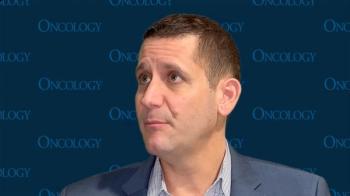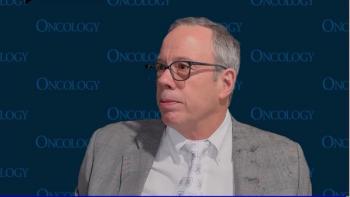
SCLC is ‘On the Cusp’ of Being Better Understood, Says Expert
The use of novel agents like tarlatamab may be “interesting” among patients with small cell lung cancer in the relapsed setting, says Gregory Peter Kalemkerian, MD.
Following the publication of updated guidelines for managing small cell lung cancer (SCLC) from the American Society of Clinical Oncology (ASCO) and Ontario Health (Cancer Care Ontario), experts in the field may be “on the cusp” of understanding the disease better and leveraging said understanding to advance novel treatment strategies, according to Gregory Peter Kalemkerian, MD.
In a conversation with CancerNetwork®, Kalemkerian, a clinical professor at The University of Michigan and senior author of the updated guidelines, stated that the guidelines may offer an optimal strategy for treating patients with SCLC and potentially prolonging their survival. Additionally, although he stated that newer agents such as lurbinectedin (Zepzelca) and tarlatamab may not be the definitive answer to the disease, he said that they may nevertheless improve outcomes for some patients.
Transcript:
We need to treat [patients] optimally, and that’s what the guidelines hopefully offer: an optimal way to treat patients based on the best data we have available at this time. We should try to tailor our treatments to our patients individually to give them the best possible chance of being one of those potential long-term survivors because we’re not good at predicting who those people are going to be at this point. We have to look at every person and say, "How can we best treat them to try and get them the best chance of doing as well as possible for as long as possible?"[We must] utilize all the weapons at our disposal to try to treat people optimally, both in the first line and second line as well, with newer agents like lurbinectedin coming down the line.
[Lurbinectedin is] not the best thing since sliced bread; it's not the answer to cancer. It is another brick in the wall, and it can help some people do somewhat better for a while longer. We do have these newer agents coming down the line. The first targeted therapy that may be coming out is a drug called tarlatamab. That is very interesting in the relapsed setting. Again, it’s not going to be the answer to cancer, although some people have very good responses, and we have to learn who responds best to drugs like that as we move on down the line.
I would like people to pay attention to SCLC a little bit. Non–small cell [lung cancer] has gotten a lot of the press and hype over the last 20 years or so since targeted therapy came out for that disease. Before that, we all thought SCLC was where we were going to be making advances, and we were wrong. We’re on the cusp of understanding the disease better and utilizing that understanding to advance newer strategies for trying to treat these patients.
Reference
Khurshid H, Ismaila N, Bian J, et al. Systemic therapy for small-cell lung cancer: ASCO-Ontario Health (Cancer Care Ontario) guideline. J Clin Oncol. 2023;41(35):5448-5472. doi:10.1200/JCO.23.01435
Newsletter
Stay up to date on recent advances in the multidisciplinary approach to cancer.

















































































